Protect the wildlife we love
For the full report of the program, please download here.
AIMS
- Arousing and fostering children’s love for nature and wildlife (particularly carnivores and Pangolins) through one-day outdoor activities and experience with nature.
- Providing children with the necessary knowledge and skills to increase their understanding, and to take informed actions to protect nature and wildlife.
- Inspiring children to become ambassadors and advocates for wildlife protection in their families, schools and communities.
- Contributing to the long term goal that makes conservation education become the annual extracurricular at schools.
EDUCATIONAL ACTIVITY DESIGNING
The program is designed as a one-day nature expedition, balancing both static and dynamic activities to make it appropriate to the physical, psychological and cognitive levels of elementary school students. The activities include:
- Outdoor activities to explore and discover nature at Cuc Phuong National Park;
- Indoor educational activities at the Carnivore and Pangolin Conservation Education Center;
- Observation of wildlife that cannot be released back to the wild in long-term enclosures and their stories;
- Observation of the keepers feeding the Binturongs.
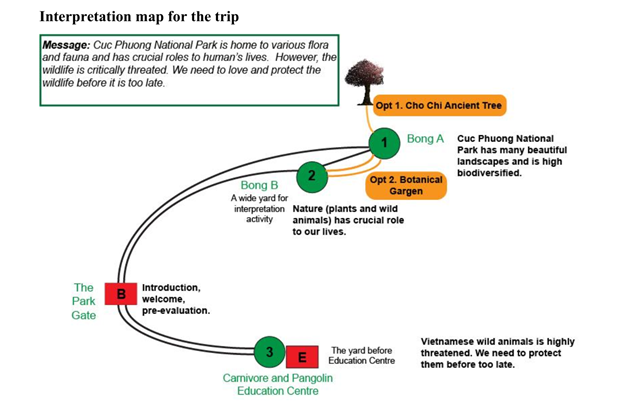
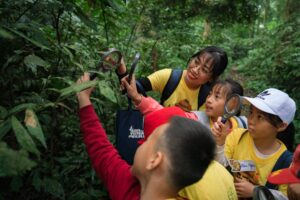
Students play the roles as forest researchers with equipped tools such as the discovery ha
ndbooks, pencils, colour pencils, magnifiers, medical tools, raincoats, mosquito repellent, etc., to ensure their safety and enhance the chance to explore the forest. They join various activities and lessons such as: sensing the forest atmosphere, observing plants, tracing and watching camouflaged animals, listening to bird sounds, measuring trees, and in combination with the lesson about the roots, stems, branches, and leaves.
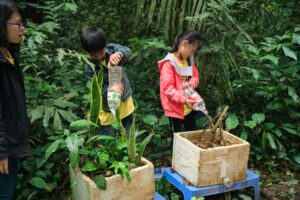
Following the Forest Researcher activity, students get to do an experiment about soil erosion in the botanical garden. Our educators encourage their curiosity and observation, analytical skills by asking questions about the experiment. Children learn that soil is a precious natural resource but is easy to be destroyed, and they also understand the erosion possibility of forest land and bare land, and the impact of deforestation on their lives – those who live right in the buffer zone of the forest. Thanks to this experiment, children can figure out the important role of the forest, make and deliver messages about forest and wildlife protection, and share their wishes to protect the forest.
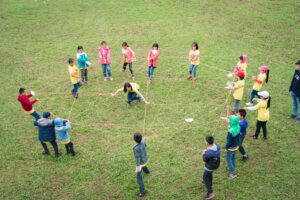
The children continue to learn while playing through an activity called “The web of life”. They learned that: the more floors, layers, and structures a forest has, the richer and more plentiful will the lives in that forest be. All lives in a forest are interdependent and have an influence on human’s lives. If mankind has too strong impacts on it, all the natural networks, including humans will be destroyed and cannot be recovered. This is a static activity to let the students learn and feel the connection among everything (human included) in our ecosystem. Our educators have also cleverly included the names of many wild animals that kids would have a chance to observe in the afternoon session to stimulate their curiosity.
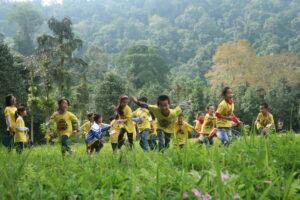
“Tiger and Deer” is the final activity in the morning session of the program. This is a fun physical activity using situational questions which require children to react quickly to find the right answer in the shortest time, and encourages their movements, i.e. running and jumping, which are beneficial to their psychophysiology development at elementary level.
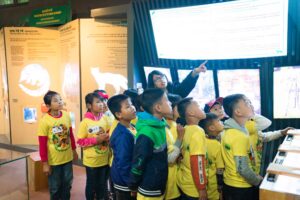
The afternoon session is a combination between indoor and outdoor study in the first Carnivore and Pangolin Conservation Education Centre in Vietnam. Inside the Education Center, students learn about the diversity of Vietnamese wildlife, particularly about carnivores and Pangolins, the threats that they are facing, and conservation efforts through interactive exhibits and games. Students note down the information they are interested in their discovery notebook. When going outside, students get to meet the wild animals in the long term care areas who are our Education Ambassadors. Here, the students will listen to the stories of their rescues, and observe the animal keepers feeding the Binturongs. Our educators also raise a series of scenario questions for the children to learn and share the actions that children should take to protect wild animals.
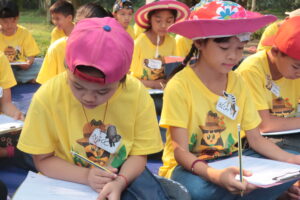
An important activity of the day is to evaluate children’s awareness before and after the program. The program’s effectiveness can be assessed via the change in the perception of children before and after the one-day learning trip. Also, there will be adjustments in the contents and activities so that it will be more suitable with children’s perception in the following programs in the future.
RESULTS OF STUDENTS’ EVALUATION
The questionnaires before and after the trip for students and the evaluation form for teachers were built and analyzed to evaluate the program.
Below are some key findings:
Results of students’ evaluation
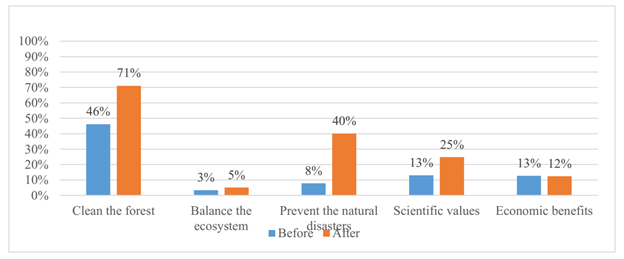 Chart 1: Assessment on students’ understanding of the roles of the forest (Unit: %)
Chart 1: Assessment on students’ understanding of the roles of the forest (Unit: %)
Chart 1 revealed that after the program, there witnessed a significant increase in students’ understanding of the forest’s roles. The role “Clean the environment” continues to have the highest rate with 71.1%, nearly doubling the rate before the program. Besides, the role “Prevent natural disasters” increases drastically with 40.1%, six times higher than before the program.
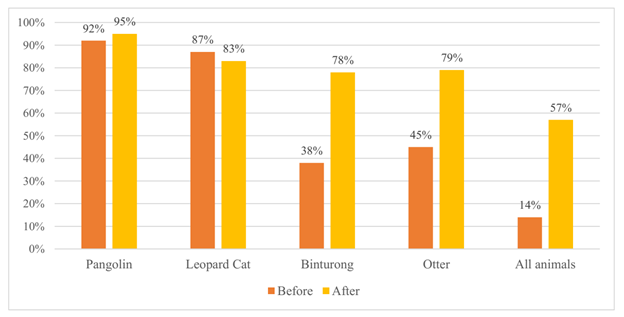
Chart 2: Assessment on students’ recognition of four wildlife species in Vietnam (Unit: %)
Chart 2 showed that after the program, the rate of all four species recognition increases five times to 57.4%, with Pangolin continuing to receive the highest recognition rate of 95.5%. Noticeably, the rate of Binturong recognition rose significantly, doubling before the trip with 77.9%. The other species like Leopard cat and Otter also witnessed a high rate of recognition (above 70%). In general, after one day of experience, there is an increase in students’ recognition of wildlife, though the rate is different among species.
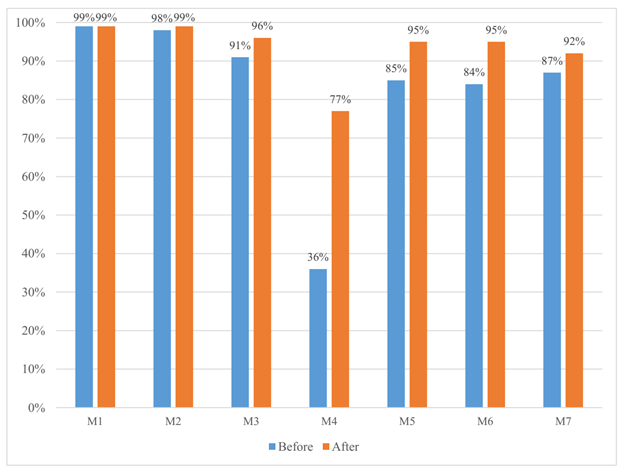
Chart 3: Assessment on students’ awareness and attitude via conservation messages (Unit: %)
Chart 3 demonstrated that after joining the program, the rate of students having right awareness rose up to 87%, 70% higher than that of before. Noticeably, the message 4: “Do not buy wild animals from the market and release them back to the wild” before the trip had the lowest rate of agreement but now increased the most, nearly 41% higher than that of before. All the other messages had a rate of above 70%.
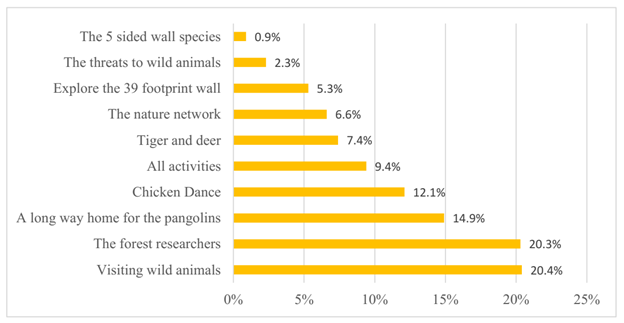
Chart 4.1: Assessment on students’ interest in the activities of the program (Unit: %)
It can be seen that each activity received a different level of interest. Approximately half of the students chose their most favourite activities to be “Visiting wild animals” and “The Forest Researchers” with the rate being 20.4% and 20.3% respectively. The other activities had a rate from about 0.9% to 15%.
The students’ interest in the program’s activities can also be seen in the rate of activities that they dislike, which is shown in the below chart.
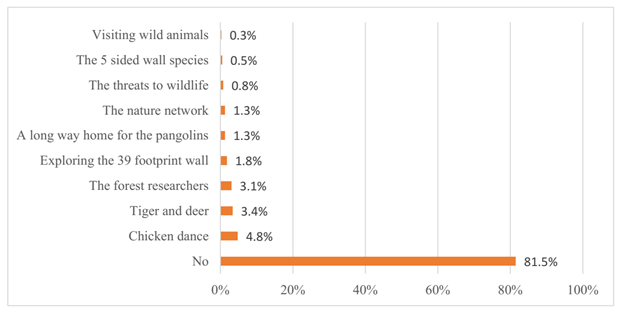
Chart 4.2: Assessment on the student’s dislike activities in the program (Unit: %)
It can be seen that more than 80% of students liked all activities in the program. The rate of students who disliked the activities was below 5%.
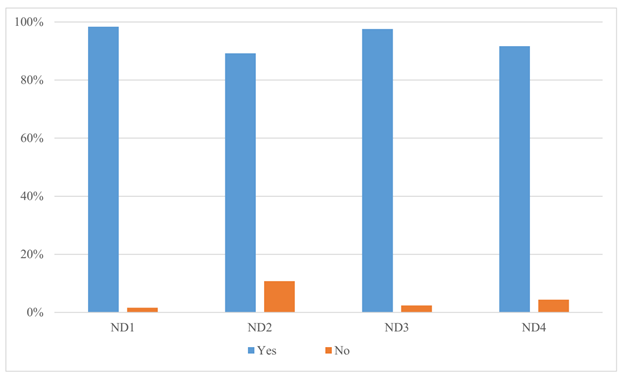
Chart 4.3: Assessment of students’ satisfaction level to the program (Unit: %)
Chart 4.3 showed that 98.4% of students love the program, 89.2% of them thought that the program’s contents supported their lessons at school, 97.6% said that our educators are very enthusiastic to them, and 91.7% wanted to continue participating in the programs like this in the future. Only 4.4% did not want to join the following programs for personal reasons such as being car sick or not wanting to travel by car. In short, the activities in the program received positive feedback from the students.
Feedback from teachers
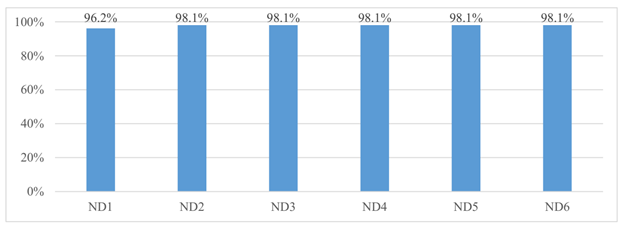
Chart 5: Evaluation of teachers’ satisfaction in the program (Unit: %)
Chart 5 revealed that the program received support and satisfaction from the teacher with a rate above 90% in all categories.
